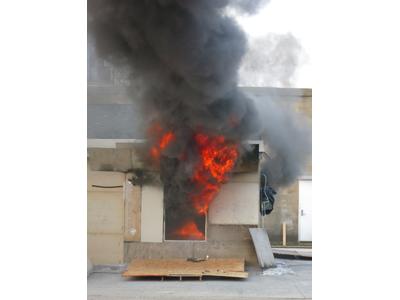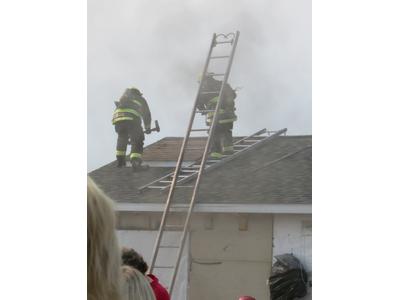Cardiovascular and Chemical Exposure Risks on Today's Fireground
Summary
Funding provided by: Department of Homeland Security, United States Fire Administration-Assistance to Firefighters Grant Program: Fire Prevention and Safety Grant
Fighting fires exposes the human body to many different environmental and pathophysiological hazards, potentially increasing the risk of occupational-related injuries and fatalities. Sudden cardiac events are a leading cause of line-of-duty deaths in the Fire Service and the primary acute health concern. On the other hand, cancer is a primary chronic health concern associated with firefighting. In this study, we collect pertinent physiological data concerning cardiovascular and carcinogenic risks associated with firefighting activities in a simulated single family structure.
A team from the Illinois Fire Service Institute (IFSI), UL Firefighter Safety Research Institute (UL FSRI) and the National Institute for Occupational Safety and Health (NIOSH) began a study to investigate the impact of real structural firefighting operations on address several important health concerns:
1) What is the physiological and chemical impact from the various exposures experienced by firefighters employing different tactics and working in different job assignments on the fireground?
2) How do factors related to firefighting affect heat stress and cardiovascular responses under realistic fire environments encountered in today’s structures?
3) How effectively does the body recover over the 12 hours following a response?
4) How do toxic combustion products get into a firefighter’s body?
5) How effective are PPE and skin cleaning procedures?
Results from this study are currently being published and disseminated. Stay up to date by regularly checking the Cardiovascular and Chemical Exposure Risks Toolkit at https://www.fsi.illinois.edu/CardioChemRisks and following us on social media @IFSIresearch.
Related Projects
- Cardiovascular and Chemical Exposures during Fire Training Scenarios
- Revolutionizing the Protective Hood: Particulate Protection, Cleaning Effectiveness, and Training Demonstration- North Carolina State University lead
- New Basis for Evaluation Heat Strain of Firefighting Gear- North Carolina State lead
- Evaluation of Dermal Exposure to Polycyclic Aromatic Hydrocarbons in Firefighters - NIOSH lead
- Science, Medicine, Research, Technology for Emergency Responders (SMARTER) - Skidmore College lead
Images
Files
| Fire Service Reports |
| Cardiovascular & Chemical Exposure Risks in Modern Firefighting (Full Report) |
| Cardiovascular & Chemical Exposure Risks in Modern Firefighting (Summary) |

